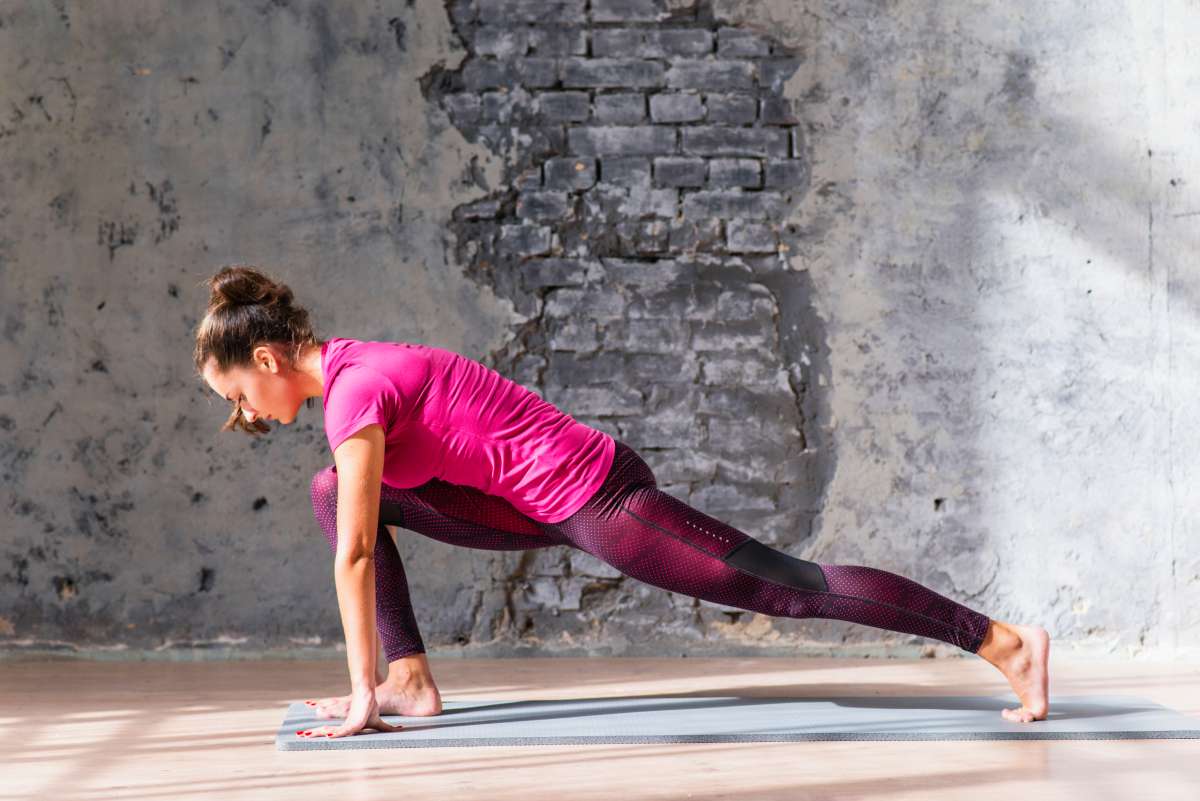Embarking on a yoga journey is all about finding balance, strength, and flexibility. One pose that beautifully encapsulates this balance is Ashwa Sanchalanasana, also known as the Equestrian Pose. In this article, we’ll explore a balanced approach. We will delve into yoga poses that complement Ashwa Sanchalanasana. These poses enhance your practice both physically and mentally.
Introduction to Ashwa Sanchalanasana
Understanding the Equestrian Pose
Ashwa Sanchalanasana, or the Equestrian Pose, is a dynamic yoga asana. It stretches the legs and opens the hips. It also strengthens the core. It’s often incorporated into vinyasa flows to create a sense of movement and grace. Whether you’re a seasoned yogi or just starting out, this pose provides strength. It also offers flexibility that is hard to beat.
Benefits of Ashwa Sanchalanasana
This pose not only improves flexibility but also enhances balance and stability. Additionally, it promotes mindfulness and focus, making it a comprehensive addition to any yoga routine. According to Dr. B.K.S. Iyengar, mastering Ashwa Sanchalanasana can lead to significant improvements in overall posture and mental clarity.
The Importance of Complementary Poses
Achieving Balance and Flexibility
Complementary poses help in balancing different muscle groups, preventing imbalances that can lead to injuries. By integrating poses that target various parts of the body, practitioners can cultivate a more rounded and flexible physique. For instance, pairing Ashwa Sanchalanasana with stretching exercises like Downward-Facing Dog ensures that your muscles are both strong and supple.
Enhancing Strength and Stability
Strengthening poses support the body in maintaining proper alignment during Ashwa Sanchalanasana. This synergy not only makes the practice more effective but also safer. Incorporating poses like Plank Pose can significantly enhance your core strength, providing the necessary support for a stable Equestrian Pose.
Top Yoga Poses to Complement Ashwa Sanchalanasana
1. Warrior II (Virabhadrasana II)
Warrior II is a powerful pose that builds strength in the legs and opens the hips. Its emphasis on balance and focus pairs perfectly with Ashwa Sanchalanasana, creating a cohesive flow. This combination not only challenges your stability but also enhances your concentration.
2. Chair Pose (Utkatasana)
Chair Pose strengthens the thighs and ankles while challenging your balance. This pose complements Ashwa Sanchalanasana by engaging similar muscle groups and enhancing overall stability. Plus, it’s a great way to build endurance for longer yoga sessions.
3. Tree Pose (Vrikshasana)
Tree Pose is excellent for improving balance and concentration. Integrating Tree Pose with Ashwa Sanchalanasana helps in developing a steady and controlled practice. It’s also a fantastic way to engage your core and improve overall posture.
4. Downward-Facing Dog (Adho Mukha Svanasana)
Downward-Facing Dog stretches the hamstrings and calves while strengthening the arms and shoulders. It serves as a perfect transition pose, maintaining the flow between Ashwa Sanchalanasana and other asanas. This pose also helps in relieving tension in the spine.
5. Plank Pose (Phalakasana)
Plank Pose is essential for building core strength, which is crucial for maintaining proper alignment in Ashwa Sanchalanasana. It also enhances overall body stability, making your practice more effective and safe.
6. Low Lunge (Anjaneyasana)
Low Lunge stretches the hip flexors and strengthens the legs, complementing the deep stretches achieved in Ashwa Sanchalanasana. This pose also encourages flexibility in the hips and groin area, which is vital for a balanced yoga practice.
7. Cobra Pose (Bhujangasana)
Cobra Pose opens the chest and strengthens the spine, providing a counterbalance to the front bend in Ashwa Sanchalanasana. This balance helps in maintaining a harmonious flow in your yoga practice, ensuring that all muscle groups are engaged effectively.
Creating a Balanced Yoga Sequence
Sequencing for Maximum Benefit
Creating a balanced sequence involves alternating between poses that stretch and strengthen different muscle groups. Starting with dynamic poses like Ashwa Sanchalanasana followed by complementary asanas ensures a well-rounded practice. For example, transitioning from Warrior II to Downward-Facing Dog allows for both strength building and deep stretching.
Incorporating Breath and Mindfulness
Breath control and mindfulness are integral to a balanced yoga practice. Synchronizing your breath with movement enhances the effectiveness of each pose and promotes mental clarity. Practices like Breath of Fire can further deepen your focus and energy levels during the session.
Tips for Practicing Ashwa Sanchalanasana Safely
Proper Alignment
Maintaining proper alignment is crucial to avoid injuries. Make sure that your knee does not extend beyond your ankle and that your hips are squared to the front. Keeping your spine elongated helps in achieving the full benefits of the pose without strain.
Common Mistakes to Avoid
Avoid arching the back or collapsing the chest. Keep your spine elongated and your gaze ahead to keep balance and focus. It’s also essential to engage your core to support your lower back and keep stability throughout the pose.
Enhancing Your Practice with Props
Using Yoga Blocks and Straps
Yoga props like blocks and straps help in achieving the correct alignment. They offer support, especially for beginners or those with limited flexibility. For instance, placing a block under your hand in Ashwa Sanchalanasana offers extra support. It helps in maintaining proper form.
Modifications for Different Levels
Modifying poses to suit your level ensures that you can practice safely and effectively. Beginners can use blocks for added stability. They can also practice against a wall. Advanced practitioners can deepen the pose by incorporating arm variations. They can also try balancing challenges.
Integrating Ashwa Sanchalanasana into Daily Routine
Morning Yoga Routine
Start your day with a yoga routine that includes Ashwa Sanchalanasana. This can energize your body. It also sets a positive tone for the day ahead. Pairing it with Sun Salutations can create a dynamic and invigorating morning practice.
Evening Stretching Exercises
Incorporating Ashwa Sanchalanasana into your evening routine can help release the tensions of the day. It also prepares your body for restful sleep. Gentle stretching and deep breathing exercises can enhance relaxation and reduce stress.
Mind-Body Connection in Yoga
Focusing on Breath Control
Mindful breathing enhances the mind-body connection, allowing for deeper engagement in each pose and fostering a sense of inner peace. Techniques like Ujjayi breath can be particularly effective in maintaining focus and rhythm during your practice.
Cultivating Mindfulness
Being attentive in your practice cultivates mindfulness, reducing stress and increasing overall well-being. Integrating meditation or mindfulness exercises before or after your yoga session can amplify these benefits.
Advanced Variations of Ashwa Sanchalanasana
Adding Arm Variations
Incorporating arm movements can increase the challenge and engage the upper body, adding complexity to Ashwa Sanchalanasana. For example, extending your arms overhead or reaching forward can enhance balance and strength.
Balancing Challenges
Advanced practitioners can experiment with balancing on one leg or adding transitions between poses to further enhance their practice. These variations not only improve stability but also increase the overall intensity of the workout.
Achieving Balance Through Complementary Poses
Recap of Key Points
Integrating complementary yoga poses with Ashwa Sanchalanasana creates a balanced and effective practice. By focusing on alignment, breath, and mindfulness, practitioners can enhance both their physical and mental well-being. This balanced approach ensures a holistic yoga experience that nurtures the body and mind alike.
Encouragement for Continued Practice
Embrace the journey of yoga with patience and dedication. Continually exploring and integrating new poses will lead to a more fulfilling and balanced practice. Don’t hesitate to reach out to yoga communities or instructors for guidance and support on your path. Remember, yoga is a personal journey—enjoy each step along the way!




